Simple, Secure Upload to QNAP NAS
MASV makes it easy for teams and clients to securely drag and drop large files into your QNAP NAS, with minimal configuration and zero port forwarding.
Read the full tutorial below.

Fast Large File Uploads
Contributors can drag and drop files into a secure browser window to deliver files quickly to your QNAP storage via auto-ingest.
Secure Access
Provide access to select team members to your QNAP NAS using only MASV—no wrangling with system permissions or ports.
Easy Implementation
Set up MASV on QNAP in just minutes. Use MASV to track file deliveries and manage privileged access to your device using our Web App.
チュートリアルの準備
次のチュートリアルでは、その方法を学ぶ:
- をインストールします。 MASVエージェント on a QNAP NAS.
- Create a secure connection to your QNAP NAS in the MASV Web App.
- Use MASV Portals to ingest files from contributors directly to your QNAP storage.
必要なもの
- . MASVアカウント.
- A QNAP NAS for which you have administrator privileges for the QTS と QuTSCloud (QNAP software).
For this tutorial, we’ll install the Docker image of the MASV Agent. For information about supported platforms, visit MASVエージェントのセットアップ.
Time to complete: Approx. 15 min.
注: If you’re looking for more detailed info about the MASV Agent, you’ll find commands, parameters, and more in the MASV 開発者向けドキュメント.
That’s all! Time to install the MASV Agent.
MASVエージェントのインストール
You can install the MASV Agent by using the Container Station available in the QNAP QTS or QuTScloud.
他にも Container Station to pull the MASV image from Docker Hub, and create and configure a container. You’ll need to create or choose folders to map to your MASV Agent volumes before you can set up the container.
Installing Container Station
If you don’t already have Container Station installed with your QTS software, you can follow the instructions below.
1. Open your QTS software, and open App Center.
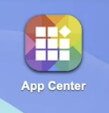
2. Search the App Center for Container Station, and select Install. The app installs in the background.
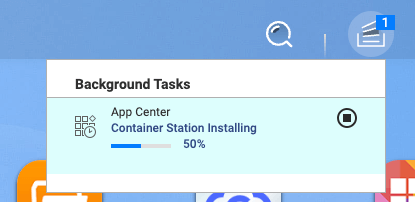
3.3. Welcome screen, select Start to accept the default image location and to open the app.
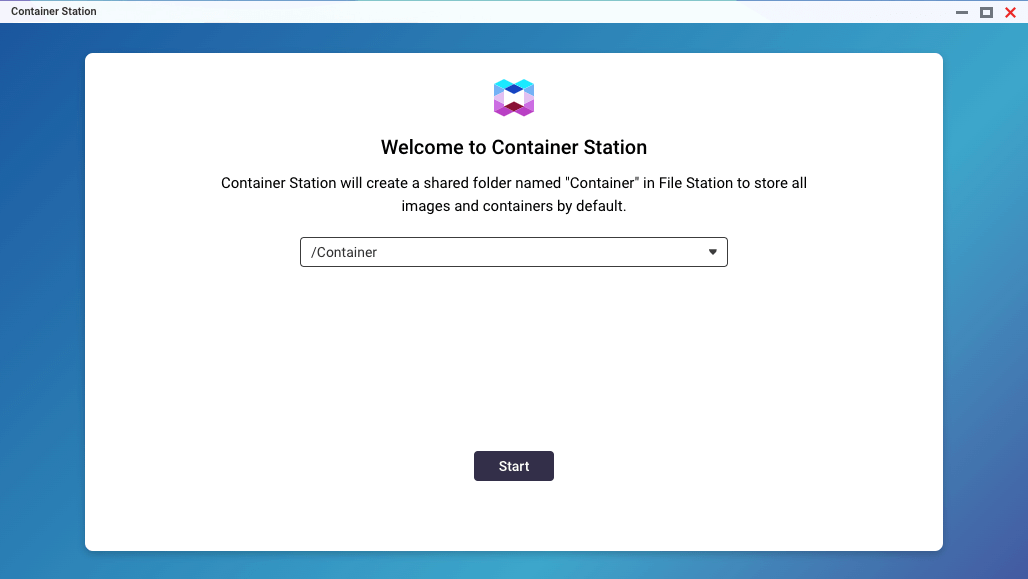
Prepare a File Structure in File Station
Before you create a container for MASV, you’ll want to create or identify where you’ll map the container volumes.
For this tutorial, we’ll create a masv folder in your QNAP device’s storage with two default subfolders: config (for the MASV Agent configuration files, including settings.yml) and data (the location where the downloaded files will be delivered).
1. In the QNAP QTS software, select File Station.

2. In File Station, create the folder structure you want to use or verify that you have an existing folder structure that you can use.
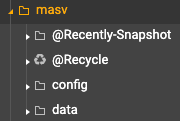
Pull the MASV Agent Image and Create a Container
1. In your QNAP QTS software, open Container Station.
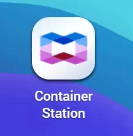
2. In the Container Managerを選択します。 Container from the sidebar on the left, and select the . のボタンを押します。
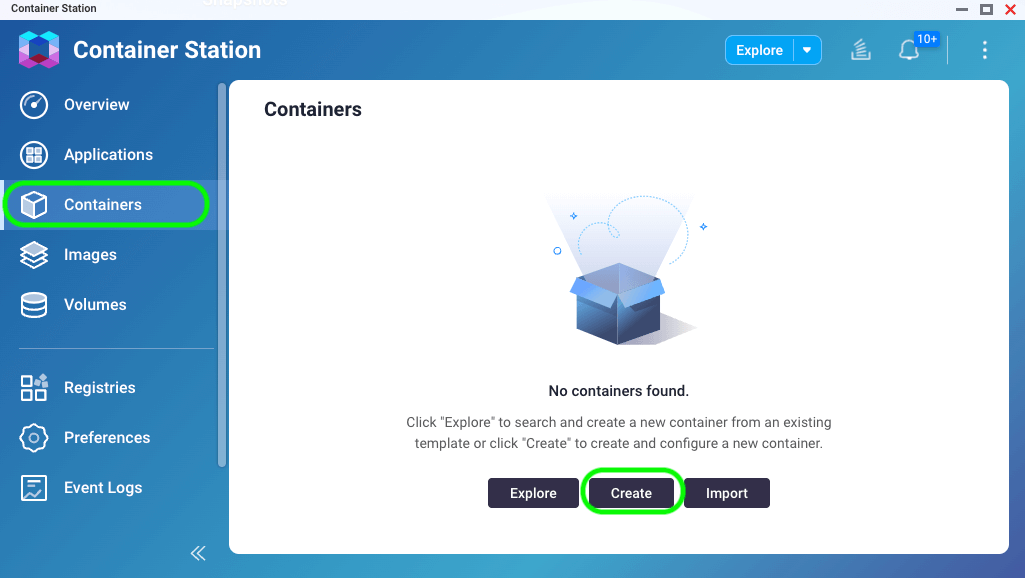
3.での Create Container window, on the Select Image page, choose the following:
- Mode: Select Basic mode.
- Registry: Select Docker Hub.
- Image: Copy and paste the following image reference: masvio/masv-agent:latest.
- Select the Try pulling the image from the registry before creating the container checkbox.
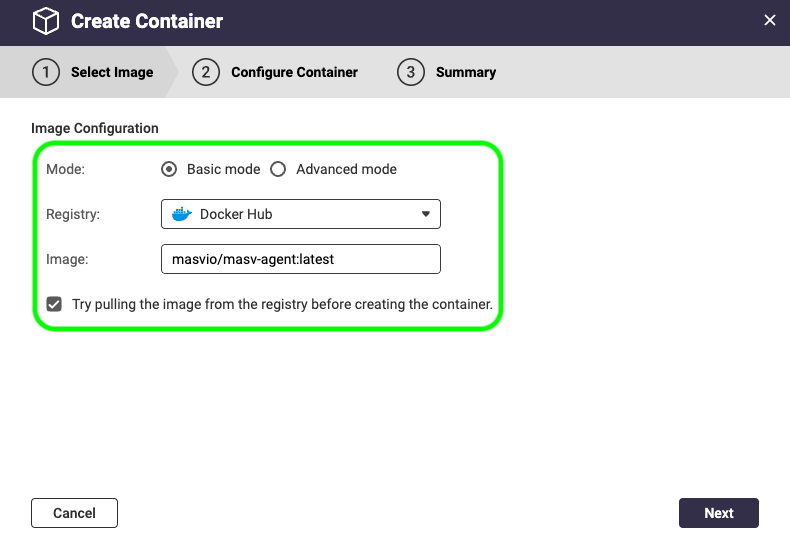
4.選択 次のページ.
5. On the Configure Container page, type a name for the container.
6. We recommend setting the Restart policy や Always. For this tutorial we’ll accept all default Network Configuration の設定を行います。
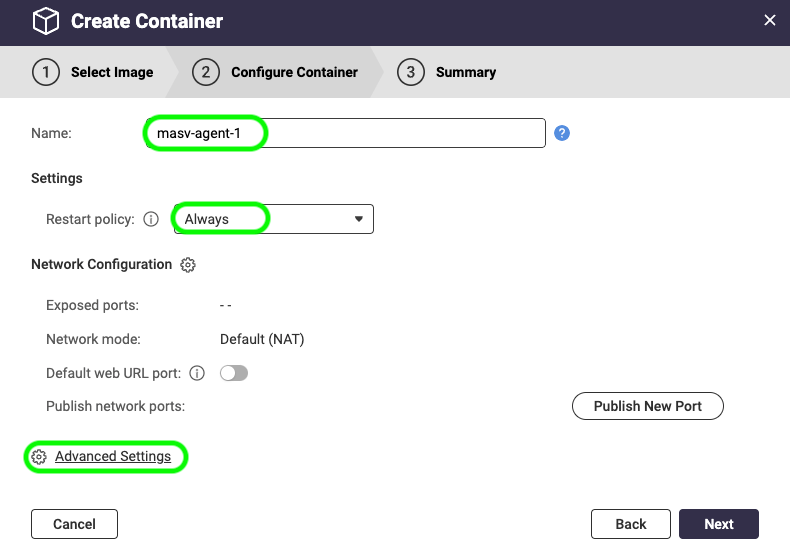
7.を選択する。 詳細設定 link, and in the 詳細設定 window, select ストレージ from the sidebar.
8. Start with a clean slate by selecting the Delete ![]() icon to the right of the Volume ボックスを使用します。
icon to the right of the Volume ボックスを使用します。
9. From the Add Volume menu, select Bind Mount Host Path.
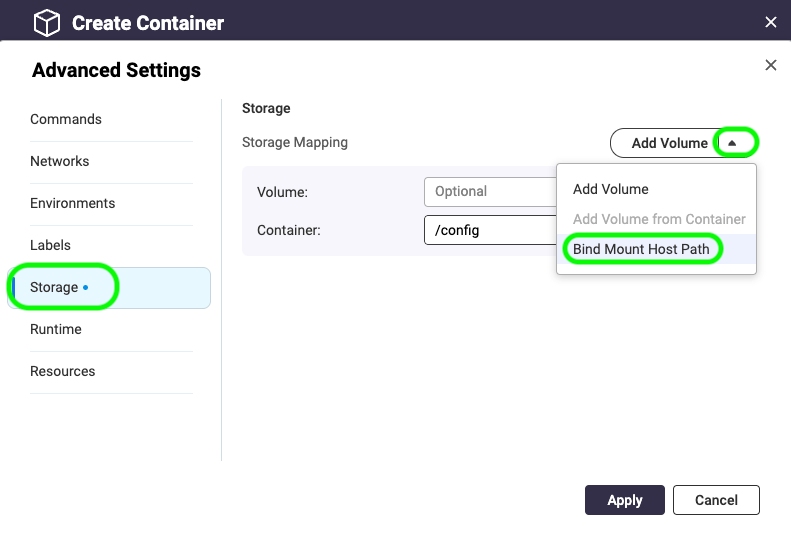
10. To set a Host folder, select the yellow ブラウズ ![]() button and navigate to the folder where you want to store the MASV configuration files. We’ll choose masv/config, and select 適用.
button and navigate to the folder where you want to store the MASV configuration files. We’ll choose masv/config, and select 適用.
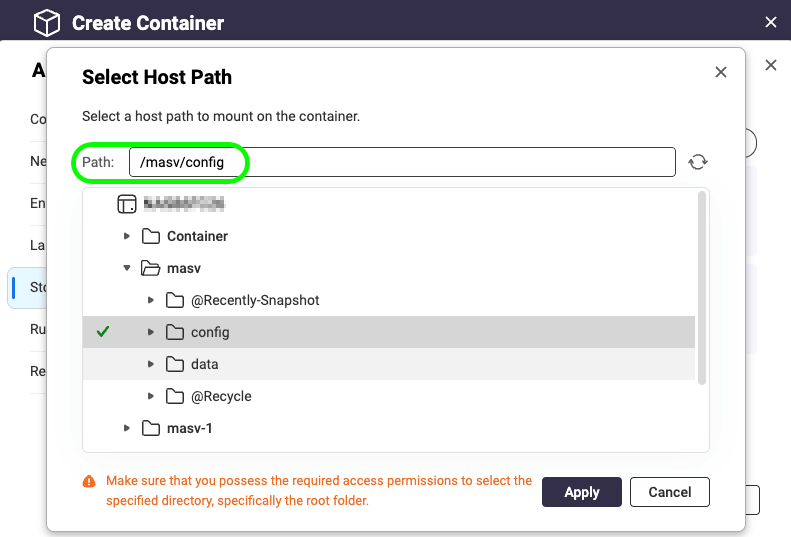
11. In the Container box, type /config. You can leave the RW setting (for Read/Write) as it is.
12. From the Add Volume menu, select Bind Mount Host Path again, and repeat the steps to map a folder where you files will be downloaded or uploaded from. For Host we’ll use masv/data and for Container, we’ll enter /data.
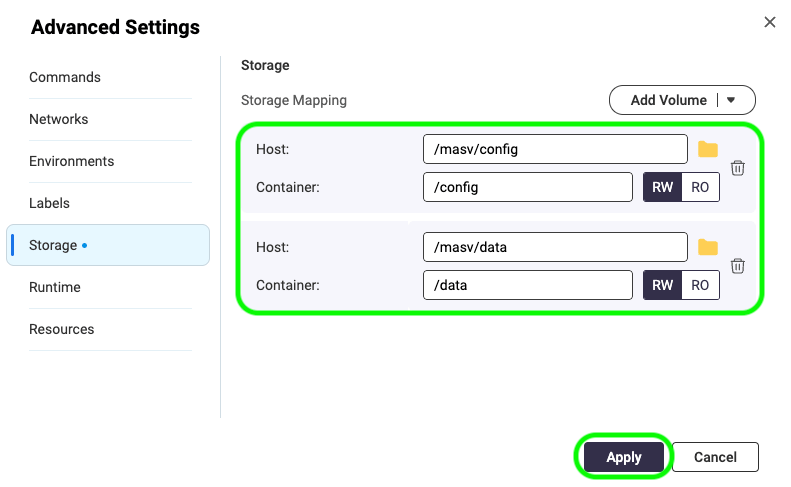
13. Select 適用 to close 詳細設定, 次のページで、その後 Finish. In a few moments your new MASV Agent container displays in the Containers のリストを作成します。

Now we’ll open the MASV Web App to create an Integration with the QNAP device.
Create a Secure Connection to your QNAP NAS in the MASV Web App
In the MASV Web App, we’ll set up a secure connection by registering an ID and secret key with the QNAP device.
When setting up the QNAP integration, we need to choose a direction (ストレージに保存 と Send from storage). We’ll set up a ストレージに保存 integration, but you can easily repeat the process to set up a Send from storage integration as well.
1.にサインインする。 MASVウェブアプリを選択し、左側のサイドバーで 統合.
2.2. 統合 ページで 利用可能な統合 タブを選択し QNAP.

3.での 統合の追加 ウィンドウで 接続名 ボックスを使用します。
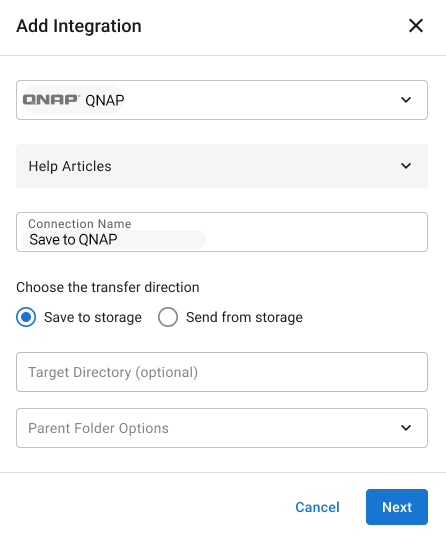
4. For the 移籍の方向性 option, select ストレージに保存 to allow MASV to send files to your QNAP device.
- (Optional) When you choose ストレージに保存, you have the option to set a ターゲットディレクトリ (must be an existing folder) and Parent Folder Options (package name used to create a folder). These are relative to the root path and are appended as shown in the following example: /data/{target directory}/{package name}/{transferred files or folders}.
5. Select 次のページそして 登録統合 window, ignore step 1 (MASV Agent installation is already done).
6. Copy the block of code from step 2. メモ: The ID and Secret are included in the code block. If you are familiar with the MASV Agent CLI and wish to manage connections manually, the ID and Secret are provided below the code block.
Now we’ll open a Terminal window for the MASV Agent container.
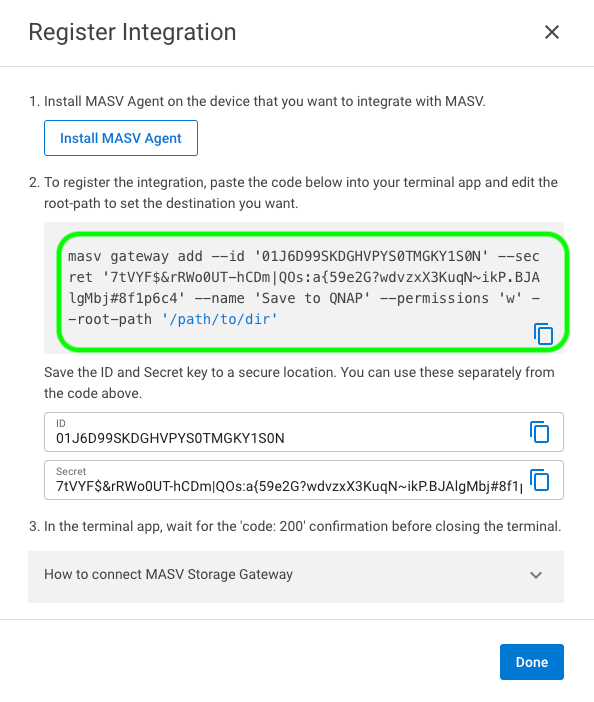
7.での Container Stationを選択します。 Containers in the sidebar, and select the container name (masv-agent-1) to view container details and status.

8. Select the Execute button to open the Execute Console, and select Execute to open a Terminal window.
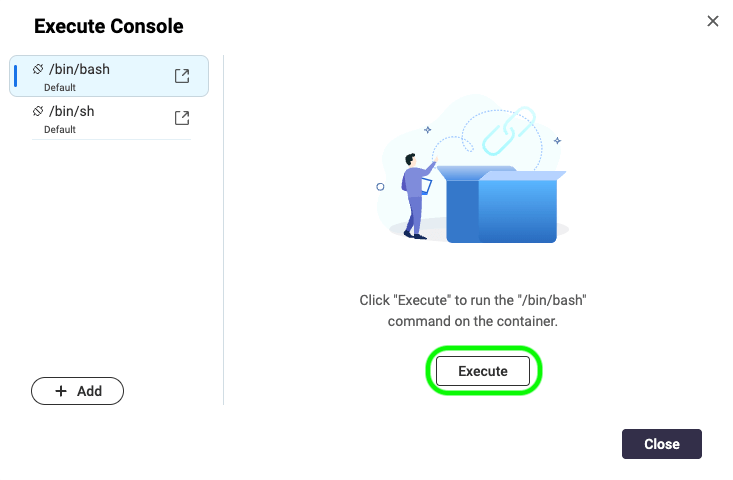
9. Paste the code that you copied from the MASV Web App into the Terminal window.

10. In the Terminal window, edit the –root-path placeholder text (‘path/to/dir’) to set the directory to data: –root-path ‘/data’を押す。 入る. A successful connection displays “code”: 200.
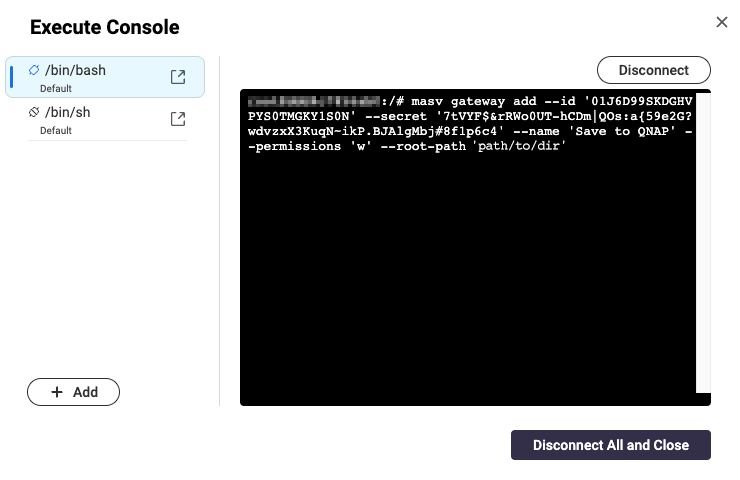
11. In the MASVウェブアプリ, in the 登録統合 window, select 完了.
12. On the 統合 page select the 私の統合 tab, refresh the browser page, and confirm that the ステータス column for the QNAP NAS displays よっしゃー.
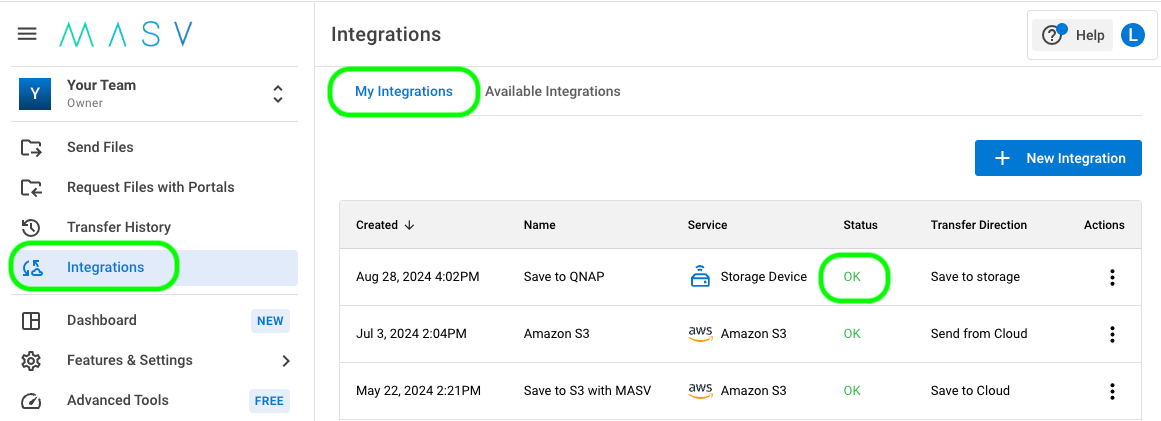
Save Files to Your QNAP NAS with MASV Portals
MASV Portals are web uploaders that make it easy to collect files from contributors and deliver them to your storage of choice. Let’s take a look at how this process works with our new QNAP storage integration.
You’ll first need a MASV Portal.まだ設定していない場合は MASVウェブアプリ.
Full instructions can be found in the Help: ポータルの作成、編集、削除方法. You can create an Instant Portal in a couple of clicks, or create a Custom Portal.
1.1. MASVウェブアプリを選択します。 ポータルでファイルをリクエスト 左のサイドバーから。
2.2. ポータルでファイルをリクエスト ページで、ポータルを選択します。 行動 列でメニューアイコン[縦に3つ並んだ点]を選択し 編集.
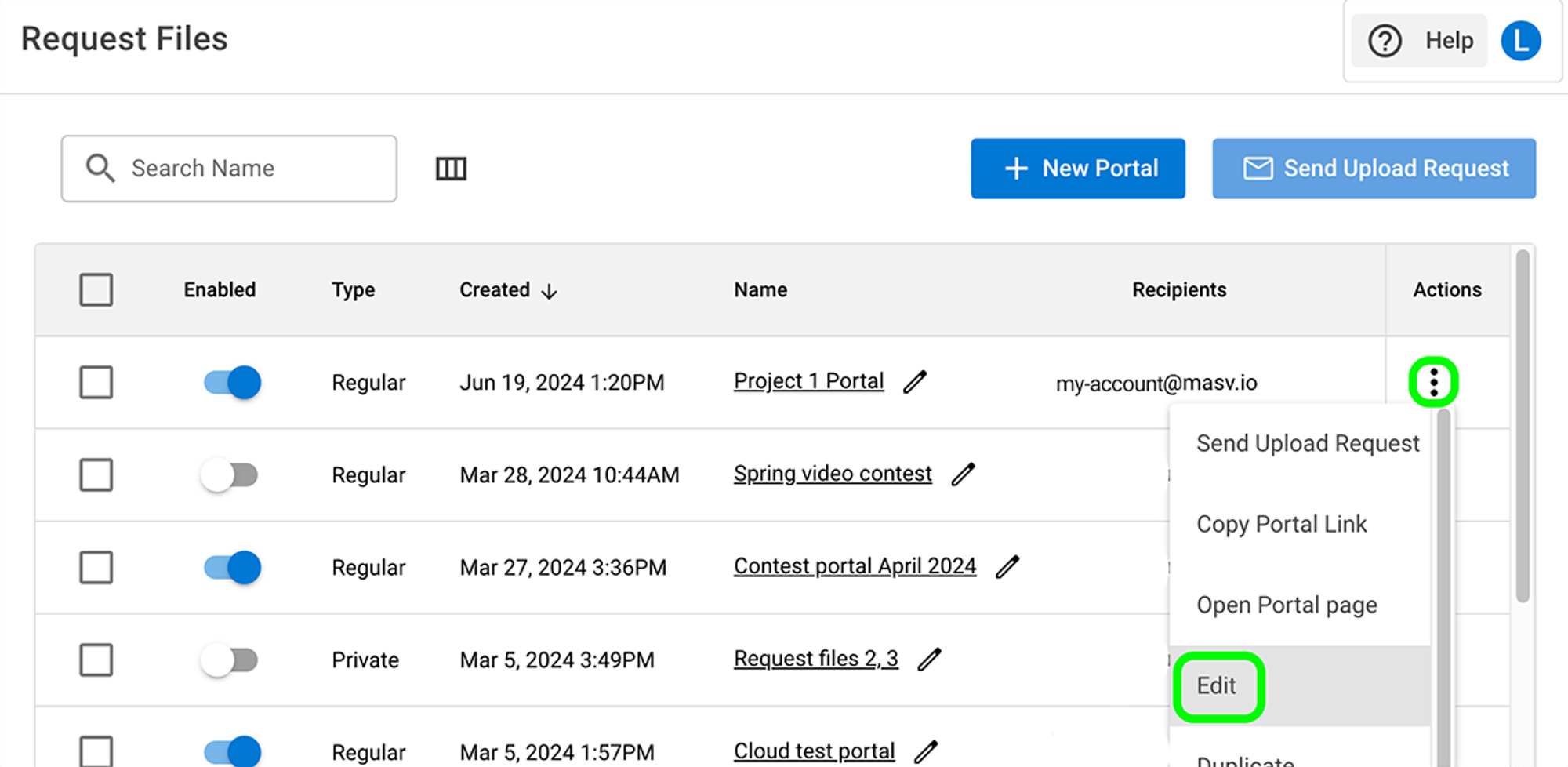
3.3. ポータルの編集 ページで 統合 タブで ステータス column, enable the toggle for your QNAP integration.
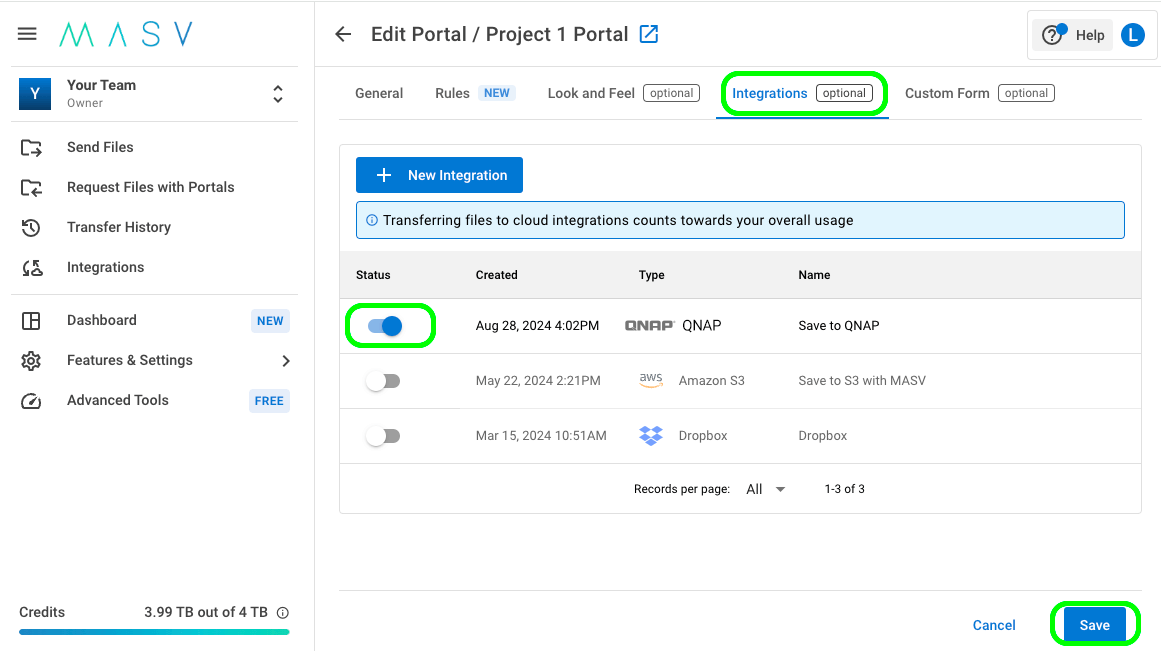
4.を選択します。 保存 ボタンをクリックして変更を適用します。
5.に戻る。 ポータルでファイルをリクエスト page. Now you’re ready to send a file request.
6. Select the 行動 メニューアイコンから アップロードリクエストの送信 メニューから

7. Fill in the Send Upload Request Via Email fields, adding the email recipients and the message that you want to send.
8. Select the リクエストを送信 ボタンをクリックしてウィンドウを閉じる。
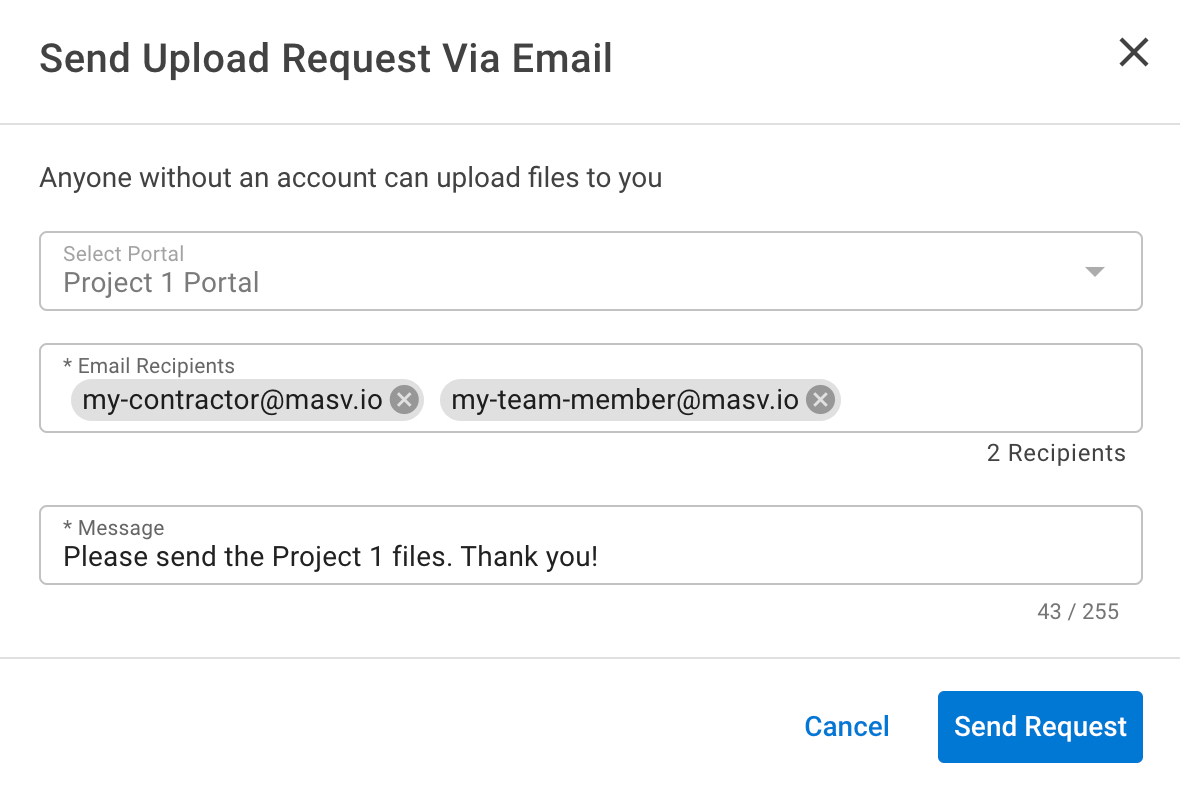
What Happens Next?
1. The email recipients listed in your upload request receive an email with a link to your Portal.
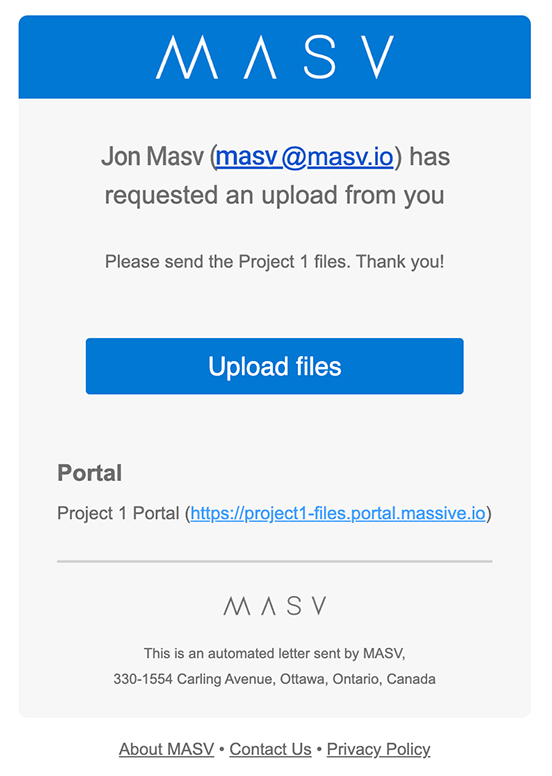
2. Using their web browser, the email recipient can drag and drop the files onto the Portal page and send the files as a package.
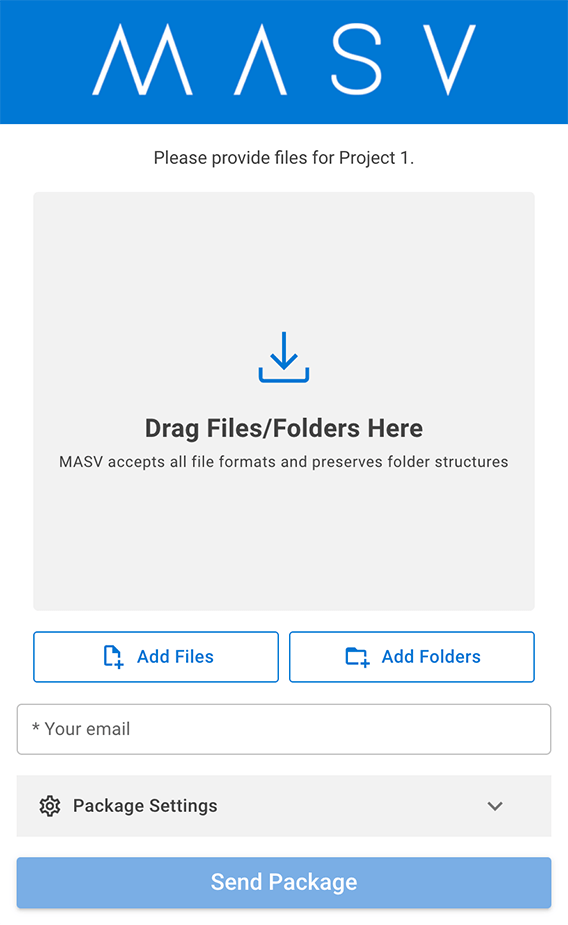
4. As the Portal owner, in addition to a package notification email, you’ll receive an email notification when the files have been delivered to your Synology storage.
💡 Tip: As an alternative to monitoring received files via email, you can review all sent or received packages in the MASVウェブアプリ. Select 転送履歴 in the sidebar, and on the 転送履歴 ページで Received tab to view a list of all received packages.
You can scroll left-right to view all info, and in the 行動 column, select the icon and choose Package Details for more info, including a delivery log.
💡 Tip: Packages that are active in your 転送履歴 can easily be sent to any of your Integrations, including QNAP. Simply select a package from the Sent と Received タブで 行動 column, select the icon and choose Send Package to Cloud. Select the Integration you want from the list, and select Confirm.
Files are saved to your default location (/data/MASV) or to the Target Directory configured in the integration.
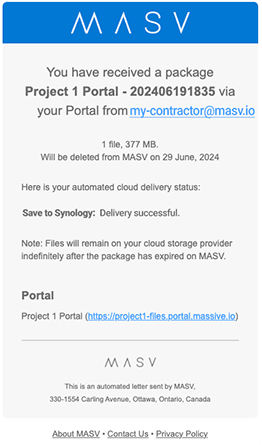
確認したい? On your QNAP device, open File Station, and navigate to your mapped folder. If you didn’t set an optional Target Directory, your files are saved to the following default location: Portal Downloads > [Portal name] > [Package name].
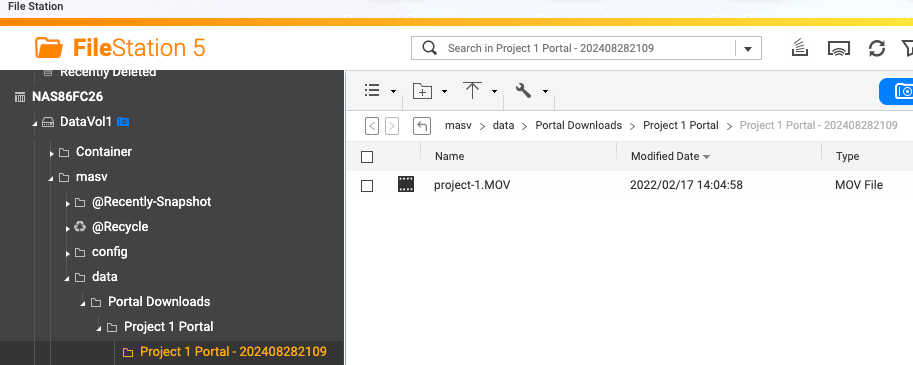
おめでとう! You’ve installed the MASV Agent, set up an Integration in the MASVウェブアプリ, and delivered files to your QNAP storage by using a MASV Portal. You can create as many Integrations and MASV Portals as you need to help organize your file transfers, teams, and projects.
次のステップ
There are so many ways our customers build MASV into their workflows, from managing uploads and downloads in a central hub, to taking advantage of advanced features in the MASVデスクトップアプリ, to building custom workflows by tapping into the MASV API.
For more information about the MASV API, visit our MASV開発者向けドキュメント.
Try the MASV Integration with Synology NAS
Use MASV and Synology storage to speed up content ingest to storage workflows.